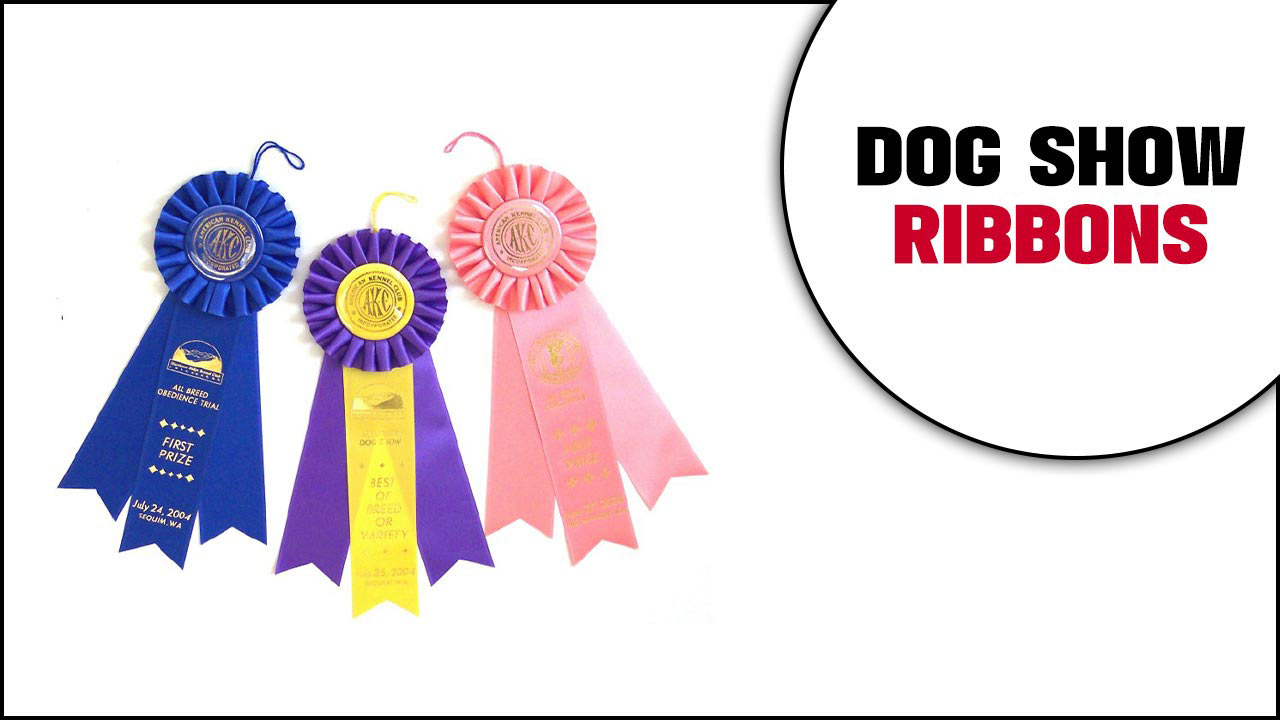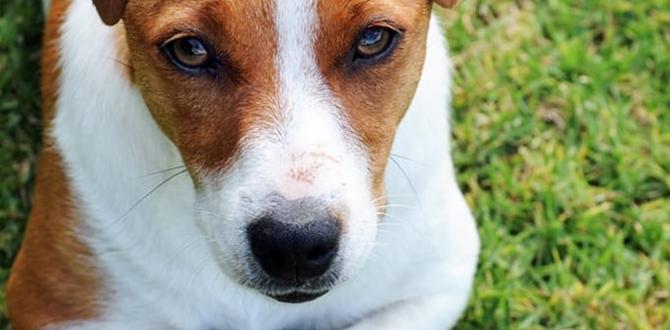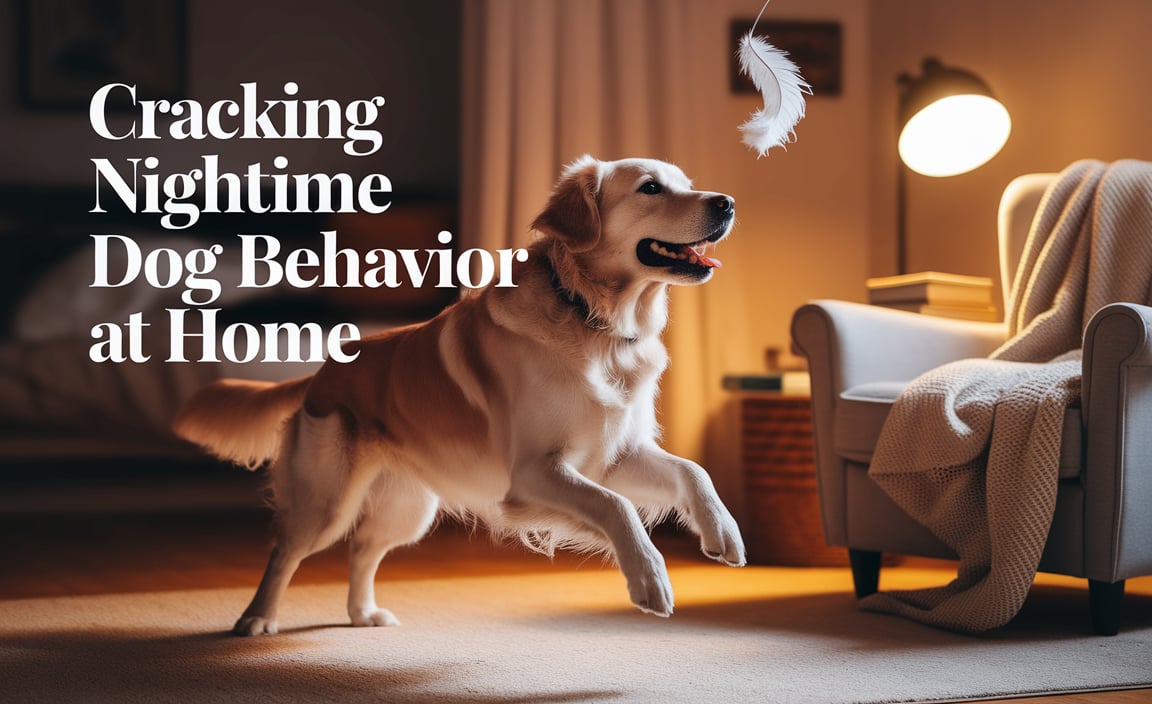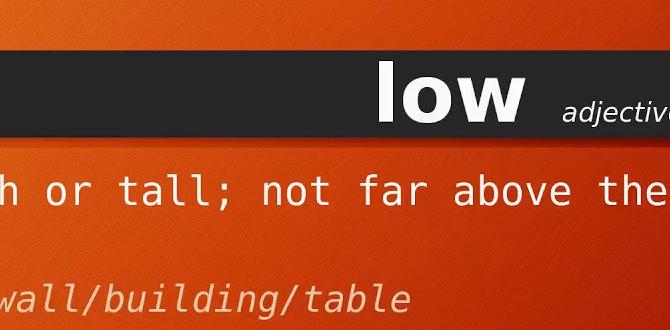Quick Summary: Effortlessly fix your puppy’s leash pulling with positive reinforcement and consistent training! Start by teaching loose-leash walking indoors, rewarding your pup for walking by your side. Gradually introduce distractions, and use a comfortable harness. Patience and positive methods make a happy, walkable companion.
Welcoming a puppy into your home is a joyous adventure! As they grow, one common hurdle many new pet parents face is leash pulling. It can turn a pleasant stroll into a tug-of-war, making walks less enjoyable for both you and your furry friend. But don’t worry, you’re not alone! This is a super common puppy phase, and with the right approach, you can help your pup learn to walk politely by your side. We’re going to break down how to tackle this with simple, effective steps that build a strong bond and create a well-behaved walking buddy, all without harsh methods. Get ready to transform your walks from frustrating to fun!
Dog Leash Pulling In Puppies: Proven Effortless Fix
Seeing your energetic puppy bound ahead, straining against the leash, is a familiar sight for many dog owners. While it’s a sign of their enthusiasm and excitement, it can quickly become a frustrating experience. Leash pulling isn’t just annoying; it can be unsafe for both you and your puppy, especially as they grow and their strength increases. Fortunately, teaching a puppy to walk on a loose leash is entirely achievable, and it doesn’t require complicated techniques or a lot of struggle. The key is understanding why puppies pull and implementing consistent, positive training methods right from the start.
At dogscarehub, we believe in making dog ownership as rewarding and stress-free as possible. That’s why we’re sharing a step-by-step guide designed for beginner owners, focusing on techniques that foster trust and cooperation. We’ll cover everything from choosing the right gear to rewarding good behavior, ensuring you have all the tools you need to succeed. Let’s get your pup walking by your side, enjoying every step of the journey together!
Understanding Why Puppies Pull on Leash
Before we jump into solutions, it’s helpful to understand the “why” behind your puppy’s pulling. Puppies explore the world with incredible enthusiasm, and this exploration often involves their nose, eyes, and mouths – all of which can lead them to want to move forward quickly! Their natural curiosity, coupled with a lack of understanding about leash manners, are the main culprits.
- Excitement and Exploration: Puppies are inherently curious. Everything is new and exciting, from a fluttering butterfly to an interesting scent on the pavement. They want to get to it NOW!
- Forward Momentum: Humans and dogs naturally move forward. If a puppy feels tension on the leash, their instinct might be to pull harder to get where they want to go, creating a feedback loop.
- Lack of Training: They simply don’t know better yet! Leash manners are a learned behavior, just like sitting or fetching. It requires patient teaching.
- Breed Predispositions: Some breeds were bred for jobs that involved pulling (like sled dogs or hounds). While this doesn’t mean they can’t be trained, it might require a bit more dedication.
- Accidental Reinforcement: If your puppy pulls and gets to sniff that interesting bush or greet that approaching dog, they’ve essentially been rewarded for pulling.
Recognizing these reasons helps us approach training with empathy and a clear strategy. We want to redirect their natural energy and curiosity into a controlled, enjoyable walk.
Essential Gear for Loose Leash Walking
The right equipment can make a significant difference in your puppy’s training journey. You want gear that is comfortable for your puppy and effective for you. Avoid equipment that is overly punitive or restrictive, as this can create fear or anxiety.
1. The Leash
A standard four-to-six-foot nylon or leather leash is ideal. Avoid retractable leashes, as they teach dogs to pull to maintain tension and offer less control. They can also be prone to breaking or tangling.
2. The Collar or Harness
This is where opinions can vary, but for puppies learning loose-leash skills, a well-fitting harness is often the most recommended tool.
- Flat Collars: These are good for identification tags but not ideal for leash training, as a strong pull can put pressure directly on a puppy’s delicate throat and trachea.
- Martingale Collars: These offer a bit more control than flat collars by gently tightening when the dog pulls, but they still require careful fitting and can be misused.
- Front-Clip Harnesses (No-Pull Harnesses): These are a favorite for a reason! When your puppy pulls forward, the leash attachment point on their chest gently redirects them back towards you. This discourages pulling without causing pain or discomfort. Look for harnesses with good padding to prevent chafing.
- Head Halters (e.g., Gentle Leader, Halti): These work by guiding the head, similar to how a horse is guided. They can be very effective for strong pullers, but some puppies initially find them uncomfortable and may require a desensitization period.
For most puppies, a good quality front-clip harness is your best bet for effortless, positive leash training. Always ensure any collar or harness fits snugly but comfortably, allowing for two fingers to slide underneath.
External Resource: The American Veterinary Society of Animal Behavior (AVSAB) offers position statements that recommend using positive reinforcement-based training methods, which align with using tools like front-clip harnesses and avoiding aversive equipment.
Step-by-Step Guide to Effortless Loose Leash Walking
This method focuses on rewarding your puppy for the desired behavior: walking nicely by your side on a loose leash. Consistency is your best friend here!
Step 1: Master the Basics Indoors
Start in a quiet, distraction-free environment like your living room. This is where your puppy can focus solely on you.
- Gear Up: Put the harness and leash on your puppy. Let them wear it around the house for short periods initially to get used to it.
- Positive Association: Before you even start walking, sprinkle treats around the harness and leash, and give your puppy a treat when you clip it on. You want them to associate the equipment with good things.
- The “Let’s Go” Cue: Hold the leash and use a happy, inviting tone. Say “Let’s go!” (or your chosen cue).
- Reward Proximity: As soon as your puppy is walking beside you, with the leash slack, offer a high-value treat and praise (e.g., “Good puppy!”). The treat should be given at your side, reinforcing that this is the correct position to be in.
- If They Pull: The moment the leash tightens, stop walking. No need to yank or scold. Simply freeze. Wait for your puppy to create slack in the leash – perhaps they turn to look at you, or step back. The INSTANT the leash is loose again, resume walking and praise them. You might even ask for a quick sit before continuing.
- Short & Sweet: Keep these initial sessions very short, just 2-5 minutes, a few times a day. End on a positive note.
Step 2: Gradually Introduce Mild Distractions
Once your puppy understands the concept indoors, it’s time to slowly add in minor distractions.
- Move to the Yard: Practice in your backyard where there are more sights and smells, but still relatively controlled.
- Doorway Practice: Stand in your doorway and have your puppy walk through. If they pull, stop. If they walk with a loose leash, reward.
- Quiet Street: Before venturing onto a busy sidewalk, try walking on a very quiet street or cul-de-sac.
- The “Be a Tree” Method: If your puppy pulls relentlessly in a new environment, stop and stand still like a tree. Wait for them to calm down and the leash to slacken before moving again. This teaches them that pulling halts the fun, while a loose leash allows them to continue exploring.
Step 3: Navigate Real-World Environments
Now for the real test! This is where patience and consistency are crucial.
- High-Value Rewards: Use extra tasty treats – small pieces of cheese, cooked chicken, or special training treats. These are more motivating in exciting environments.
- Mark and Reward: Use a clicker or a verbal marker like “Yes!” the moment your puppy is in the correct heel position (next to your leg, leash loose). Immediately follow with a treat. Do this frequently, especially as you encounter new stimuli.
- Redirection is Key: If your puppy starts to focus too much on a distraction (another dog, a person, a squirrel), try to redirect their attention back to you with a cheerful sound or by offering a treat. If they return their gaze to you, reward!
- Embrace Stops: Expect to stop frequently. Every time the leash tightens, stop moving. It might feel slow at first, but this is the most effective way to teach your puppy that pulling gets them nowhere.
- Practice, Practice, Practice: Aim for short, frequent training walks rather than one long, overwhelming one.
Step 4: Proofing and Generalization
This involves practicing in increasingly challenging situations to ensure your puppy understands loose-leash walking everywhere.
- Vary Your Routes: Walk in different neighborhoods, parks (during quiet times initially), and even pet-friendly stores.
- Introduce More Distractions Slowly: Work your way up to busier areas. If your puppy gets overwhelmed, retreat to a less distracting environment and build up again.
- Fade Treats Gradually: As your puppy becomes more reliable, you can start to reward intermittently. Instead of every few steps, reward every 5-10 steps, then every minute. Continue to use treats for particularly good walking or when you encounter a new, challenging situation.
- Vary Rewards: Sometimes reward with a treat, sometimes with praise, sometimes by letting them sniff a particularly interesting spot. This keeps them engaged.
Troubleshooting Common Leash Pulling Issues
Even with the best intentions, you might encounter some bumps along the road. Here are a few common issues and how to address them:
My puppy lunges or barks at things
This is often excitement or even fear. If it’s excitement, try to increase the distance from the trigger and reward for focus on you. If it seems like fear, work with a certified professional dog trainer and consult with your veterinarian, as this may require more specialized behavior modification. For now, increase distance and reward calm behavior.
My puppy ignores treats
Are you using high-value enough treats? If not, try something more enticing like small pieces of hot dog, cheese, or freeze-dried liver. Also, consider the environment; if it’s too distracting, your puppy might not be able to focus on treats. Try again in a less stimulating area.
My puppy pulls as soon as we step outside
This is classic “doorway excitement.” Before opening the door, ask your puppy to sit. Only open the door when they are calm and the leash is loose. If they strain at the door, close it and wait for calm. Practice this “sit-stay” at the door until they can pass through without lunging.
It feels like I’m not making progress
Remember that training takes time and consistency. Puppies have short attention spans and get easily distracted. Celebrate small victories! If your puppy pulls 10% less than last week, that’s progress! Revisit earlier steps if needed, and ensure you are rewarding correctly. Sometimes, a quick session with a professional trainer can help you hone your technique.
The “Be a Tree” Technique Explained
This is a cornerstone of positive leash training. When your puppy pulls, you simply become an unmoving object – a tree!
How it works:
- As soon as the leash goes taut, freeze in your tracks.
- Do not move forward, no matter how much your puppy tugs or strains.
- Wait patiently. Your puppy will eventually stop pulling, perhaps out of confusion or a desire to see what’s happening. This might involve them looking back at you, or the leash simply going slack.
- The instant there is slack in the leash, resume walking. You can even offer a small treat or praise for that moment of slack.
Why it’s effective: It directly teaches your puppy that pulling stops the fun (walking) and a loose leash allows them to continue moving forward. It’s a clear, consistent message without any physical correction.
When to Seek Professional Help
While most leash pulling issues can be resolved with consistent, positive training, there are times when professional guidance is invaluable. Don’t hesitate to seek help if:
- You’re feeling overwhelmed or frustrated, and it’s impacting your relationship with your puppy.
- Your puppy is showing signs of aggression (growling, lunging aggressively, snapping) on walks.
- You suspect an underlying medical issue that might be causing discomfort or reactivity.
- You’ve tried various methods consistently for several weeks with little to no improvement.
A certified professional dog trainer (CPDT-KA, CPDT-KS) or a veterinary behaviorist can assess your specific situation and provide tailored advice and training strategies. Organizations like the Certification Council for Professional Dog Trainers (CCPDT) can help you find qualified professionals in your area.
Making Walks Enjoyable for Everyone
Teaching your puppy to walk on a loose leash is more than just about preventing pulling; it’s about building a foundation of communication, trust, and mutual respect between you and your dog. Enjoyable walks are a vital part of a happy, healthy life for your canine companion, providing mental stimulation, physical exercise, and socialization opportunities.
Remember that every puppy learns at their own pace. What matters most is your consistent effort, your positive attitude, and your commitment to a kind training approach. By understanding your puppy’s motivations and applying these simple, effective techniques, you’ll be well on your way to enjoying delightful, heel-to-toe walks with your best friend.
| Common Leash Pulling Problem | Potential Cause | Recommended Solution |
|---|---|---|
| Puppy lunges forward to get to things (smells, dogs, people). | High excitement, curiosity, desire to greet. | Use high-value treats to redirect attention to you. Stop walking when leash tightens (‘tree’ method). Reward focus on you. Increase distance from triggers. |
| Puppy pulls constantly, seems oblivious to leash slack. | Learned behavior, lack of understanding, habit. | Implement the ‘tree’ method strictly. Reward every moment of loose leash. Keep training sessions short and frequent. Use a front-clip harness. |
| Puppy is anxious or fearful of other dogs/people and pulls away. | Fear, anxiety, uncertainty. | Increase distance from triggers. Reward for calm behavior at that distance. Avoid forcing interactions. Consult a professional trainer or behaviorist. |
| Puppy pulls primarily when leaving the house. | High anticipation and excitement for outdoor adventure. | Practice ‘sit-stay’ at the door. Only open the door when the leash is loose and puppy is calm. Make entering the world a calm event. |
Frequently Asked Questions About Puppy Leash Pulling
Q1: How long does it take to train a puppy not to pull?
There’s no exact timeline, as every puppy learns at a different pace. With consistent daily practice for just 5-10 minutes, you might see significant improvement within a few weeks. However, mastering loose-leash walking is an ongoing process that can take several months. Patience and persistence are key!
Q2: Should I use a treat pouch?
Yes! A treat pouch is incredibly helpful. It keeps your high-value rewards easily accessible, so you can quickly mark and reward your puppy the moment they walk nicely by your side. This reinforces the behavior immediately.
Q3: My puppy chews on the leash. What should I do?
This is common! First, ensure the leash isn’t too long or dangling in a way that encourages chewing. If they start to chew, redirect them with a toy or a command like “Leave it.” You can also try a specially designed taste-deterrent spray on the leash. Never let them walk unattended if they are chewing the leash.
Q4: How often should I practice leash walking?
Short, frequent training sessions are much more effective than long, infrequent ones. Aim for a few 5-minute sessions throughout the day. Even integrating lessons into your existing walks is beneficial. Consistency over duration is the mantra.
Q5: Can I use a retractable leash for training?
No, it’s generally not recommended. Retractable leashes work by maintaining tension, which can inadvertently teach your puppy that pulling is how they move forward. They offer less control and can be dangerous. Stick with a stationary 4-6 foot leash for training.
Q6: What if my puppy seems scared of the harness?
If your puppy is hesitant or fearful of the harness, start by making it a positive experience. Let them sniff it, offer treats around it, and then gently place it on them for very short periods (even just a few seconds), followed by lots of praise and a reward. Gradually increase the duration your pup wears it. You can also feed them meals or give them chew toys while they are wearing it so they associate it with good things.
Conclusion: Walking Towards a Happier Bond
Embarking on the journey of teaching your puppy loose-leash walking is one of the most rewarding training goals you can achieve together. It’s a journey that fosters communication, strengthens your bond, and transforms everyday outings into pleasant experiences rather than stressful struggles. By understanding why puppies pull, equipping yourselves with the right gear, and patiently applying the tried-and-true methods of positive reinforcement and consistency, you are setting yourselves up for success.
Remember, the “tree” method, consistent rewards for walking by your side, and gradual introductions to distractions are your most powerful tools. Celebrate every small victory, from a moment of slack in the leash to calmly passing a tempting squirrel. If you encounter challenges, don’t hesitate to seek advice from trusted resources or professional trainers. Your dedication to positive training will not only result in a well-behaved walking companion but will also build a deeper, more trusting relationship with your beloved puppy. Happy walking!
Meet Elyse Colburn, the devoted canine companion and storyteller behind the enchanting world of “Tales, Tails, and Adventures Unleashed.” A passionate dog enthusiast with a heart full of paw prints, Elyse Colburn shares heartwarming tales and insightful adventures, celebrating the joy, loyalty, and endless antics that make every dog a true hero. Join Elyse Colburn on this tail-wagging journey, where every post is a love letter to our four-legged friends.





